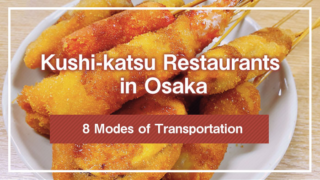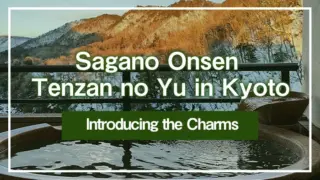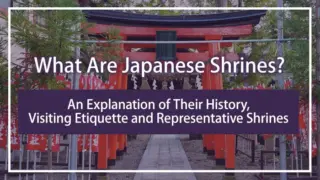Fukuoka is a popular destination not only for domestic Japanese travelers but also for tourists from overseas. There are numerous reasons for Fukuoka’s popularity, such as the spectacular views from Fukuoka Tower rising in the city center, the globally rare food stall culture, the mystical atmosphere of Dazaifu Tenmangu Shrine, and the warm hospitality of the local people.
This article introduces “unique attractions that can only be found in Fukuoka” that we especially want foreign tourists to experience. This is essential reading for those who want to experience Fukuoka’s culture and traditions.
1. Unique Festivals in Fukuoka
土居流
— 山笠ナビ編集部 (@yamakasa_navi) July 14, 2024
#yamakasa #hakata #山笠 pic.twitter.com/7ZcpCQ0JtS
Fukuoka has many distinctive festivals, from nationally famous celebrations to those that have been cherished locally for generations. Here, we introduce two especially recommended festivals: Hakata Gion Yamakasa and Hakata Dontaku.
1-1. Hakata Gion Yamakasa
Hakata Gion Yamakasa is a festival held from July 1st to 15th every year in Hakata Ward, Fukuoka City, and is designated as an Important Intangible Folk Cultural Property of Japan.
The highlight of the festival is the “Oiyama” held early morning on July 15th. The sight of men carrying floats over 5 meters tall racing through the streets of Hakata is spectacular, with the entire city enveloped in excitement as they shout “Oisaa, Oisaa.” During the festival period, elaborately decorated “Kazariyamakasa” floats over 10 meters tall are displayed throughout the city.
1-2. Hakata Dontaku
Hakata Dontaku is one of Japan’s largest citizen-participation festivals held on May 3rd and 4th every year in Fukuoka City, Fukuoka Prefecture.
The origins of Hakata Dontaku can be traced back to the traditional event “Hakata Matsubayashi,” which has over 840 years of history. During the Edo period, it was performed as a New Year’s ceremony for the Lord of Fukuoka Domain. After being temporarily discontinued during the Meiji era, it was revived after World War II as “Hakata Dontaku” and continues to this day.
The main highlight of the festival is the “Dontaku Parade” where costumed people march through the streets. Various groups including companies, organizations, schools, and individuals participate and showcase their unique performances. Multiple stages are set up throughout the city, featuring diverse stage events including traditional performing arts, music, and dance.
2. Historical Buildings in Fukuoka
Fukuoka has many charming historical buildings that evoke its history and culture. Here, we introduce four spots you should especially visit: Houmangu Kamado Shrine, Kushida Shrine, Raizan Sennyoji Daihioin Temple, and Fukuoka Castle Ruins.
2-1. Houmangu Kamado Shrine
Houmangu Kamado Shrine is a historic shrine located in Dazaifu City, Fukuoka Prefecture, and is worshipped by many as a deity of matchmaking. In recent years, it has also gained attention as a real-life manga location from the popular manga “Demon Slayer,” increasing the number of young visitors.
Houmangu Kamado Shrine is believed to provide various benefits including matchmaking, protection from misfortune, directional protection, and traffic safety. The shrine grounds feature numerous attractions including the main hall, worship hall, and kagura hall, as well as an observation deck known as a sacred place for lovers, and shrine items featuring motifs that appear in “Demon Slayer.”
Additionally, Mount Homan has long been known as a sacred place for mountain asceticism, with an inner shrine on its summit. The mountain trail is well-maintained, making it suitable for hiking.
2-2. Kushida Shrine
Kushida Shrine is located in Hakata Ward, Fukuoka City. It is the guardian shrine of Hakata and is affectionately called “Okushida-san” by locals. Its founding dates back to the Nara period, and it has long been worshipped as the guardian deity of Hakata.
The shrine grounds enshrine the main deity Ohatabushi-no-Okami (Kushida Okami), along with Amaterasu Omikami and Susanoo-no-Mikoto. It is also known as the starting point for the climax of the Hakata Gion Yamakasa festival, the “Oiyama.” The giant ginkgo tree over 1,000 years old is famous as a sacred tree celebrated in the “Hakata Iwai Uta” song.
Kushida Shrine is believed to provide various benefits including business prosperity, household safety, and matchmaking. The shrine grounds have many attractions including the “Meoto Ebisu Shrine” which brings marital harmony, and the “Reisen Tsuru no Ido” well which brings longevity.
2-3. Raizan Sennyoji Daihioin Temple
Raizan Sennyoji Daihioin Temple is a historic temple located in Itoshima City, Fukuoka Prefecture, known as a famous spot for autumn foliage.
The temple houses the “Wooden Standing Thousand-Armed Kannon Statue,” which is designated as an Important Cultural Property of Japan. It also houses numerous cultural properties designated by Fukuoka Prefecture, such as the “Wooden Tamonten Statue” and the “Wooden Jikokuten Statue.”
Especially in autumn, the large maple trees on the temple grounds turn vividly colored, attracting many tourists.
2-4. Fukuoka Castle Ruins
Fukuoka Castle Ruins are located in Chuo Ward, Fukuoka City, and are the remains of a castle built by Kuroda Kanbei and his son Nagamasa. Also called “Maizuru Castle,” it had a vast compound centered around the main, second, and third baileys on a hill between the Naka River and the Hii River.
Currently, stone walls and moats remain at the Fukuoka Castle Ruins, allowing visitors to imagine what it was like in the past. Particularly noteworthy are the “Nanmaru Tamon Turret,” an Important Cultural Property of Japan, and the “Den Shiomi Turret” and “Shimonohashi Gomon,” which are cultural properties of Fukuoka Prefecture. The tenshu platform offers a panoramic view of Fukuoka City, making it an excellent viewpoint. The Fukuoka Castle Ruins are adjacent to Ohori Park and are beloved as a relaxation spot for citizens.
3. Beautiful Scenery in Fukuoka
Fukuoka has many spots where you can enjoy various beautiful scenery, from urban views to historical landscapes and beautiful nature. Here, we introduce three especially recommended spots.
3-1. Canal Aqua Panorama
Canal Aqua Panorama is a grand entertainment show combining fountains, video, music, and lighting performed at the commercial complex “Canal City Hakata” in Hakata Ward, Fukuoka City.
The synchronized fountains, lighting, and video projections provide an impressive and immersive experience. The movement of the fountains changing with the music and the lighting effects are wonderful, giving viewers the feeling of being in a movie.
The programs shown vary depending on the time of day, featuring various works including anime, movies, and original stories.
3-2. Maizuru Park & Ohori Park
Maizuru Park and Ohori Park are two beautiful adjacent parks located in Chuo Ward, Fukuoka City.
Maizuru Park is on the site of Fukuoka Castle built by Kuroda Kanbei and his son Nagamasa, with stone walls and moats remaining. It is especially known as a cherry blossom viewing spot in spring, attracting many visitors. The park also contains facilities such as Heiwadai Athletic Stadium and Fukuoka City Art Museum.
Ohori Park was created using the outer moat of Fukuoka Castle and features a large central pond. There is an approximately 2km circuit path around the pond where people can be seen jogging and cycling. Enjoying the scenery from a boat on the water is also recommended. The park includes a Japanese garden and a children’s park, making it a space that people of all ages can enjoy.
Maizuru Park and Ohori Park are two beautiful parks located next to each other in Fukuoka City’s Chuo Ward.
3-3. Mojiko Retro
Mojiko Retro is a tourist spot utilizing historical buildings around Moji Port, which flourished as an international trade port from the Meiji to Taisho eras. The nostalgic streetscape with retro buildings is its charm.
Mojiko Station is designated as an Important Cultural Property of Japan, and the station building maintains the architectural style of the Taisho era while being renovated for modern use. Surrounding it are many historically valuable buildings such as the former Moji Customs and the former Osaka Shosen. These buildings are used as restaurants, cafes, and museums, allowing visitors to enjoy meals and shopping while experiencing history. The Kanmon Strait Museum allows visitors to learn about the history and culture of the Kanmon Strait.
At night, the Mojiko Retro area is illuminated, creating a fantastical atmosphere different from daytime.
4. Unique Dining Experiences in Fukuoka
Fukuoka is a treasure trove of gourmet food, blessed with abundant seafood and mountain produce that have nurtured a unique food culture. Among them, mentaiko and ramen are representative Fukuoka delicacies.
Mentaiko
When it comes to representative Fukuoka cuisine, mentaiko tops the list. Made by pickling walleye pollack roe with chili pepper and other seasonings, its spicy kick and rich umami make it perfect not only as an accompaniment to rice but also as a snack with alcohol.
Ramen
Fukuoka is also known as the birthplace of tonkotsu (pork bone) ramen. The rich pork bone soup pairs well with thin noodles, and one bite will captivate you with its profound flavor. Ramen eaten at food stalls is particularly unique to Fukuoka’s food culture and is popular among locals and tourists alike.
Besides these, Fukuoka has many attractive gourmet options including motsunabe (offal hot pot), mizutaki (chicken hot pot), Hakata udon, and yakitori. Please visit Fukuoka and enjoy various Fukuoka delicacies.
Conclusion
Historical buildings that evoke Fukuoka’s history include Fukuoka Castle Ruins and Kushida Shrine. Fukuoka Castle Ruins, built by Kuroda Kanbei and his son Nagamasa, convey the image of that time to the present day. Kushida Shrine is loved by locals as the guardian shrine of Hakata and is also known as the stage for the Hakata Gion Yamakasa festival. Recommended spots to enjoy beautiful scenery include Ohori Park and Mojiko Retro.
We hope this article will help make your Fukuoka trip memorable.
*This article was created based on information as of March 2025.
























